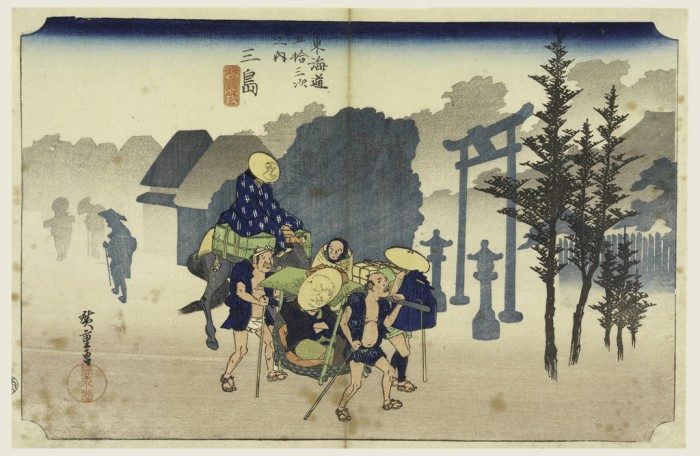Nearly 40 years later, in commemoration of the attacks the Hiroshima International Cultural Foundation and the Japan Graphic Designers Association launched a project known as the Hiroshima Appeals. Volunteers have produced an Appeals poster each year since 1983 designed with the goal of promoting global peace and preventing future nuclear attacks. After President Barack Obama affirmed in a 2009 speech “America’s commitment to seek the peace and security of a world without nuclear weapons,” JAGDA sent 12 of these Appeals posters to him, along with a letter declaring, “We were deeply moved by your resolve, your taking a bold initiative to pursue the creation of a nuclear-free world… your historic announcement infused us with fresh incentive and great encouragement in our own efforts to ensure the continuation of human life on Earth.” As Obama continues to debate and defend the nuclear agreement struck with Iran last month, the Hiroshima Appeals seem as relevant as ever.
Among these 12 gifted posters was a copy of the 1988 screenprint created by Ikko Tanaka featuring a large white dove on a grey atmospheric ground—seemingly an allusion to clouds, either nuclear or natural. Tanaka is regarded by many design historians as one of the most influential Japanese graphic designers of the twentieth century, known for his harmonious fusion of traditional Japanese and Modern European influences. Inspired by ukiyo-e (a secular genre of Japanese woodblock print), particularly the work of Ando Hiroshige (also known as Utagawa Hiroshige), Tanaka evokes this tradition in subtle ways, such as rendering the grey background of his poster in a manner similar to the hazy landscape of Hiroshige’s Morning Mist (ca. 1834).

Ando Hiroshige, Morning Mist, In the Fifty-Three Stations of the Tokaido Road (Tokaido Gojusan Tsugi-no Uchi), ca 1834. Ink and watercolor on paper.
While the dove is making use of the commonly understood symbol of peace, part of the designer’s plea for nuclear reconciliation, Hiroshige is well known for his depictions of birds and fish, and similarities can be seen between Tanaka’s dove and prints such as Pheasant with Chrysanthemums (ca. 1835). The stylistic execution of the birds, however, is where the two works deviate, with the ukiyo-e retaining much more naturalistic detail than the screenprint.
Although Tanaka’s geometric and graphic simplicity places him stylistically among leading European graphic designers of the second half of the 20th century, the underlying Japanese influences cannot be ignored. Tanaka skillfully shows how various cultural influences can be morphed and fused, producing work full of visual duality. Looking at his Appeals poster, one is reminded that many aspects of modern Western art and design were originally derived from Japanese ukiyo-e prints. In many cases, it becomes difficult to tell where one source ends and another begins.
Carlin Soos is a rising second year Master’s student at the Bard Graduate Center and a graduate intern in the Department of Drawings, Prints, and Graphic Design. A version of this post was originally published on the Cooper Hewitt design blog, Object of the Day.




